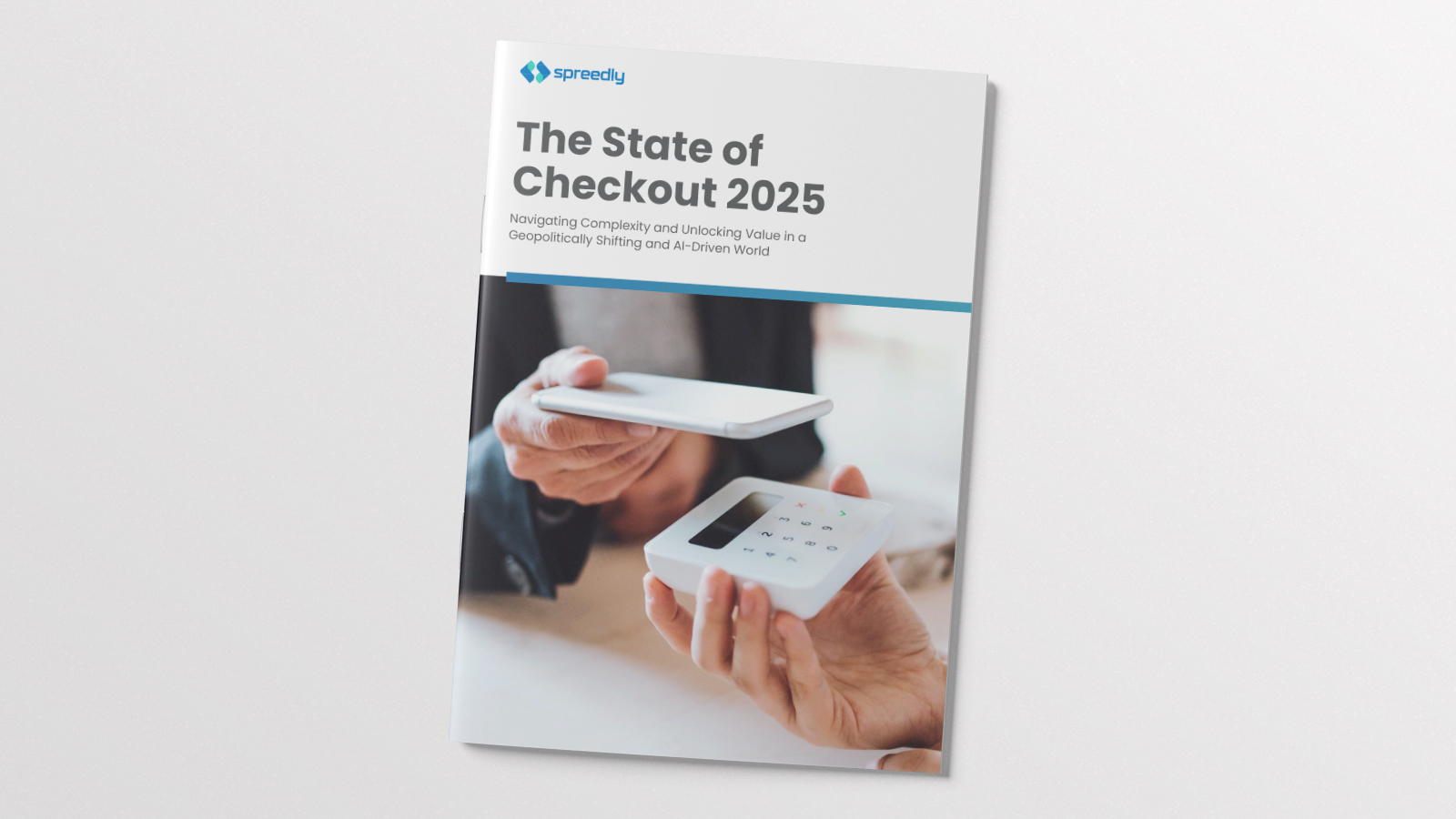
Is your payment infrastructure optimized to its fullest potential?
While this may seem like a simple question, executing payment optimization is a surprisingly complex process. This complexity is accentuated by the confusion over exactly what payments orchestration means. It’s no surprise that firms quickly find themselves at a loss when searching for the ideal payment solutions for their unique needs.
As the role of payment orchestration continues to evolve, businesses need to be mindful of the ways orchestration solutions add value and how they benefit businesses and ultimately, their customers. In building a capable and adaptable payment infrastructure, clients should familiarize themselves with agnostic payment orchestration and how it engenders true payments optimization.
Let’s first define our terms. What is payments orchestration and payments optimization, and what’s the difference between the two?
Payment Orchestration vs. Optimization: What is the Difference?
Talks and offers of payment orchestration are flooding the payments industry — but how many companies can accurately define payment orchestration and deliver on the promises that title entails?
In a recent article, Spreedly CEO Justin Benson provided definitive definitions for the two terms:
- Orchestration: Payment orchestration is the process of expanding the reach of a payment stack by assembling all the necessary components to intelligently manage payments and ensure the capture of every legitimate transaction.
- Optimization: Payment optimization aims to improve individual transaction outcomes by deconstructing and analyzing the components of individual transactions.
To break this down further, we can define orchestration as the solution that enables full optimization.
Orchestration and optimization strategies ultimately work together to create a cost-effective payment experience that satisfies customers and maximizes the value of payments.
If you’re new to payment orchestration, check out our recent Q&A session with Justin answering the payment industry’s most pressing questions about orchestration.
Positioning Orchestration as the Conductor in Your Payment Infrastructure
What goes into creating a well-optimized payment experience? To answer this, let’s imagine a musical orchestra.
Orchestral ensembles are made of many different sections of instruments, with each section playing different parts. One section may provide a musical piece with its foundational rhythm, while another may create the melody. Different elements of the composition are scored for the different sections: strings, brass, percussion, and woodwinds. While each section may be more or less prominent, they each play an important role.
These orchestral sections work together to achieve a harmonious piece of music.
For this harmony to be achieved, an orchestral ensemble relies on one crucial component — the conductor.
If we apply this same concept to a payment system, then each component of the technical infrastructure can be equated to one section of instruments. The payments orchestra is, therefore, made up of many key sections, from payment gateways that facilitate transactions to integrated alternate payment methods, as well as tailored tools for activating different payment services such as fraud prevention.
The conductor is the orchestration layer at the center of the payments orchestra that connects all the various sections to create a smooth payment experience. The conductor directs these disparate elements without compromising the value of any instrument in the ensemble.
With payment orchestration as the conductor, a payment system can operate seamlessly according to the specific parameters of a given payment system’s use case, just as a musical orchestra can perform complex pieces of music by following the orchestral conductor’s commands.
The Orchestration-Optimization Process in Action: A 3-Step Use Case
In any payment orchestration scenario, we can define the orchestration process in three steps:
- The Composition - Defining a business’s specific payment circumstances and desired outcomes The Sections - Developing the ideal pieces for each payment scenario: what gateways, providers, and payment methods will make up the sections?
- The Sections - Putting together the best providers for each payment scenario: what gateways, providers, and payment methods will make up the sections?
- The Performance - Creating additional value across sections throughout the performance: How can we further heighten the experience at the transaction and card-storage level?
Thinking back to our orchestra metaphor, this can be compared to writing a piece of music, choosing the instruments and musicians for each instrumental section, and then perfecting different components throughout each performance.
To best understand this process, let’s look more broadly at this three-step process and then contextualize each step for the specific use case of a digital streaming platform:

Step 1: The Composition - Defining Specific Payment Circumstances
When implementing orchestration within a payment system, the first crucial step toward optimization is to clearly define your payment circumstances and goals.
These circumstances can include the location of you or your target customers, the payment preferences of your customers, local regulations in the regions where you operate, and many other key factors. After defining and assessing your payment circumstances, you can then begin to select your ideal payment gateways for facilitating transactions with your target customers.
For a digital streaming platform, the scope of this step in the process can be incredibly broad. Most major streaming platforms today offer globally available services, with customers completing transactions from around the world. This can quickly create a complex payment system that must account for:
- Multiple different currencies transacting daily, weekly, or monthly
- Differing regulatory requirements depending on a customer’s region
- Preferred payment methods
- Compatibility of different payment methods with preferred payment gateways
All of these factors can impact the ideal suite a streaming platform will use.. This is where payment orchestration can be crucial, a single integration connects to hundreds of different gateways and other payment services.

Step 2: The Sections - Selecting the Ideal Providers
Once you have composed your preferences and goals, the second step is to assemble the sections that will best work together for your payments strategy.
Testing can be essential during this phase of the process, as working across payment gateways and services can help you determine the best fit for the needs of your business and customers. With an orchestration layer in place, this selection and experimentation process can be incredibly easy thanks to the simplicity of integrations, allowing you to connect to different tools and services as you see fit. Providers also change over time and agnostic orchestration allows efficient switching between and among partners.
For many clients, a critical consideration is authorization rate. Ideally, a payments strategy should optimize authorization rates by leveraging the most strategically beneficial payment gateways and services.
In the case of our digital streaming platform, a strong card-on-file management system with card-lifecycle updating is vital for keeping all customer payments in order and on time.Without the right mix of providers, the streaming platform may consciously or unconsciously be experiencing lower overall authorizations, leading to less recurring revenue and lower overall financial consistency or stability.
The selection process represents the payments network that will best bring the composition to life and is a chief value of orchestration in selecting a “best-of-breed” model for the business.

Step 3: The Performance - Realizing additional value during and after performance
Great composers and conductors have heightened the experience for audiences through subtle changes in timing and direction and by revising pieces to suit times and audiences. For a payment system to be truly optimized, it should evolve to capture incremental value while staying true to its strategy. In payments this may mean thinking critically about overlooked areas such as securing and updating your customers’ payment information.
Network tokenization helps keep payment methods updated according to real-time information, helping to ensure a customer’s information and payment credentials are well protected. Not only can network tokens be a key support pillar for payment security but they are also crucial for achieving high authorization rates, as you face a reduced risk of declines due to outdated customer payment information. While they may not have been part of the original performances, their adoption can be key to an optimized payments experience.
After selecting original gateway partners, is there a failover to a secondary gateway in place? Would our payments stack benefit from setting failover parameters not just across gateways but with a PAN versus a network token?
There are many ways to optimize and improve transaction outcomes using the tools orchestration provides and this is the journey Spreedly joins our customers on.
Spreedly Leverages Agnostic Orchestration to Optimize Your Payments
Ultimately, both payment orchestration and optimization are intertwined.
At Spreedly, we provide agnostic payment orchestration that can drastically reduce the developmental effort required to achieve true optimization. Integrating Spreedly’s payment orchestration solution within your payment stack is the key to achieving a highly efficient payment system with access to virtually any payment service you could need — from gateways and processors to fraud tools and payment methods. Our clients write the music and we conduct the performance. No matter what type of merchant or merchant aggregator operation you run, Spreedly has the orchestration expertise necessary to conduct the perfect payment symphony.
Begin optimizing your payments with Spreedly’s payment orchestration solution today.




